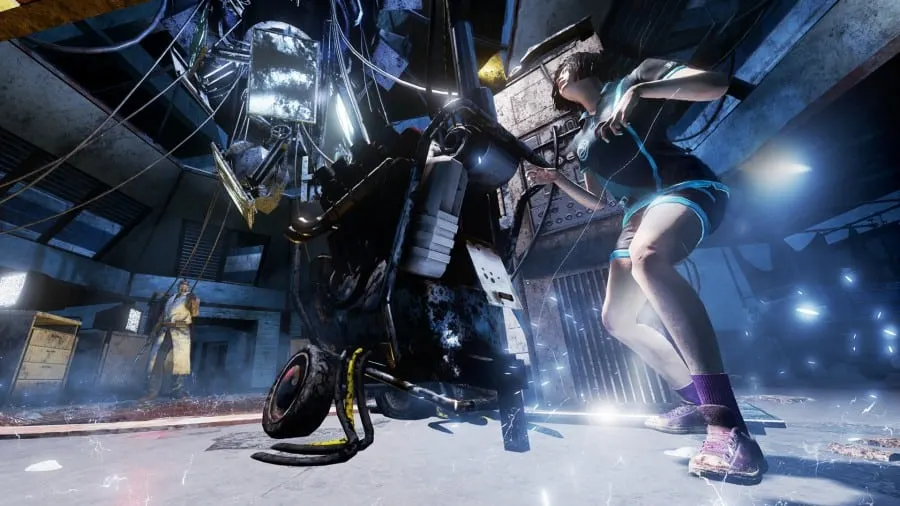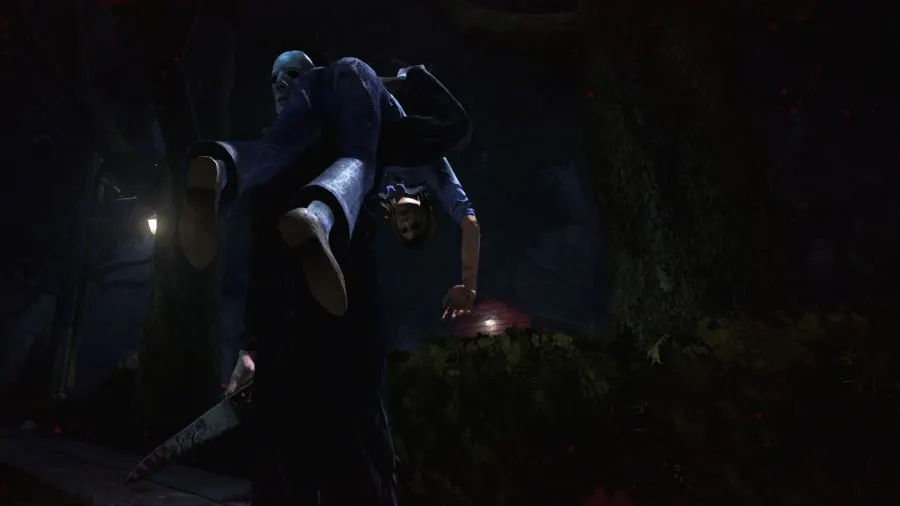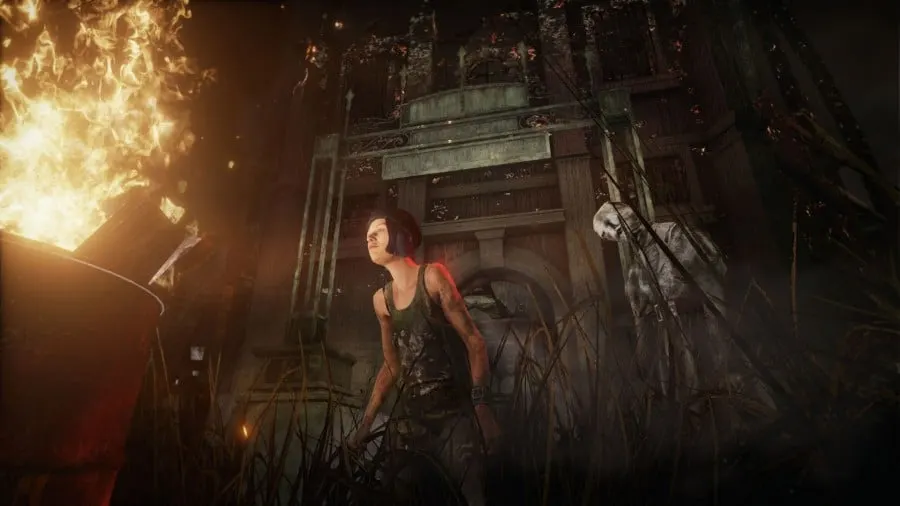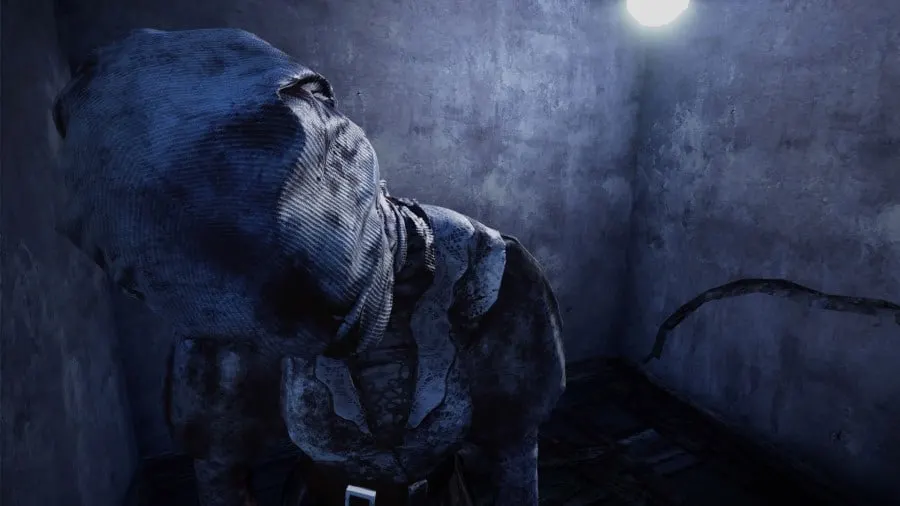Escaping the Killer isn’t quite as simple as it seems in the movies, so we’ve put together the ultimate beginner’s guide to Dead by Daylight to turn your clumsy flights into poetry in motion. Plus, we have all the tips you’ll need to make sure any hopeful escapees pay the piper as well.
Winning your matches of Dead by Daylight takes a mix of mastering the maps, techniques, and mind games needed to either create more time for your allies or trap your prey into corners.
However, that’s much easier said than done and Dead by Daylight is loaded with exciting mechanics to make every task carry some depth. We will cover all of the information you need to dominate your lobbies and strike fear into the predators or prey. Each section will help you familiarize yourself with the game before running you through a playthrough for each side.
Don’t Skip the Tutorials

Unlike in most games, the tutorials in Dead by Daylight are handy for familiarizing yourself with the game’s basics. While they won’t teach you everything you need to know about how to survive or catch your prey, they are the best place to start for any beginner.
There is a survivor’s tutorial and a killer tutorial so you can learn the steps it takes to win a match playing for either side. This is also an excellent way to earn up some easy blood points, which is the game’s main currency for purchasing the many powerups and abilities the game offers.
Understanding the Loadout Screen
After choosing to play as either a killer or a survivor, you will instantly be taken to the loadout screen, where you can decide how you want your character set up for the match. Pressing the top left icon will bring up a selection screen with all of the survivors or killers you can play.
Keep in mind that each survivor has the same base stats, making them only functionally unique in their appearances. They will all run at the same speed and complete objectives at the same rate. Killers are different, however, as each one has its specific power and differing stats. Even though survivors have the same base stats, they have various base perks, which we will discuss later.
Once a character is chosen, you will see the actual loadout for the specific name you are playing. Beginning with survivors, you will find a slot for an Item, two Add-Ons, and an Offering at the top.
Items – Special tools that can be brought into a matchup with you for an advantage.
Add-Ons – These are additions you can add to an item to enhance its effect somehow, like how efficient it is or how long you can use it along with other item-specific products.
Warning: If you die in a match, you will lose your item and any add-ons that it might have.
However, if you win, you will keep your items, and they can be found around the map in chests with their contents randomized. Items typically enhance your gameplay but are not necessary to succeed.
Instead of an Item slot, Killers are instead given a Power slot where their unique power is displayed. They can also use add-ons with their abilities. However, all Killers add-ons will be used and will not carry over between matches.
Offering – Both Killers and Survivors get this slot and can use it to gain other effects like increasing fog, blood point gain, and other options. They are one-time use objects which you will get along your Bloodweb.
Perks

The most important part of your loadout, which could have a complete guide written for it, is the perks section. These will make up the primary substance of what makes playing each character unique during a game session.
You will start with a single perk slot unlocked on any character and be rewarded with another one up to 4, at levels 5, 10, and 15. Every character in the game has three perks that are unique to that character. Along with those, you will have a selection of essential bonuses that every character can access across their Bloodweb.
Every perk has three levels to advance through the game’s skill tree system, the Bloodweb. Since every character has three starting perks and the basic ones, you will always have multiple choices.
The Bloodweb
This is where you will be racking your brain as you figure out how to spend your blood points to upgrade your character. Like the Dead by Daylight name for a skill tree, you shouldn’t be surprised to find a unique one for each character.
Through the course of gameplay, you will earn a currency called Blood Points over time. By only playing the game, you will start to gain the points necessary to fill out the blood trees of your Bloodweb. Those blood points are tied directly to your account, not your character, so you can play a game as a killer and use the points earned to buy perks for a survivor.
There is no preplanning for Bloodwebs because each blood tree is randomly generated. Once a tree is adequately filled out, you will level up and be presented with a new Bloodweb. While each Bloodweb is randomly generated, they also follow specific rules.
First, you will see that every Bloodweb has a perk available within three moves from the center of the web. Next, before level 10, you will be able to acquire each section of the Bloodweb. After class 10, you will start to see expanding trees with multiple perks.
The downside here, though, is that as you fill in these trees, the dark entity that lives in your game background will start eating away at your tree, beginning with the other perk. This means you will always want to make your way directly to a bonus before grabbing whatever else you like as efficiently as possible before you are forced to the next tree.
Another rule of the web is that every character will be presented with their particular version of their specific perks, also known as “teachable,” at levels 30, 35, and 40. Once learned, these perks are transferable and teachable to any other character you play. You will see these perks in orange, and they progress in the same order as you’ll see on the character info page.
Helpful Character/Perk Combos for Beginners

These are some of the best characters to learn the game with as they offer helpful perks that will ease your learning curve. The DLC options are generally a bit better, but the base game options have their own merits as well.
Survivor
Claudette
This character is outfitted with healthy healing and information perks so you can learn the game while staying self-sufficient.
Empathy – Shows you the aura of any hurt or injured teammates within a specific range of you, which eventually extends across the entire map. This can help you find where the Killer is and determine whether your ally is in a position where they can be enabled or not.
Botany Knowledge – This is a perk that will increase your healing speed and healing efficiency. This will make it, so any medkit you bring along lasts longer. This means you can heal more often and much quicker than usual.
Self-Care – An excellent perk for newer characters which the pros don’t use often, this perk will allow you to heal yourself without help from an ally. Your healing time during this method is significantly increased, however. Characters equipped with Botany Knowledge like Claudette can use this perk more efficiently.
DLC Feng Min
If you are willing to spend the extra money to grab the Spark of Madness DLC, Feng Min makes for perhaps the best survivor to level first with great teachable for learning the game.
Technician – With this perk, you will make less noise when fixing generators. It will also make it so that the explosion may not happen when you trigger a skill check and fail. Overall, it will help you learn to complete tasks without triggering the Killer’s approach as much.
Lithe – Whenever you perform a sprinting vault over a pallet or window, this perk will give you a 150% speed boost and inflict you with exhaustion, which will be covered later. Fatigue isn’t too big of a debuff for the massive amount of space this perk will help you create. You won’t be able to use this perk again until exhaustion wears off.
Alert – This will allow you to see the aura of the Killer whenever they break a pallet or kick a generator. Since killers will need to do this throughout the match, this can help a little extra warning to know if you are in danger or need to move.
Basic Survivor Perks
Spine Chill – This will trigger when the Killer is within a certain distance of you and looking in your direction. It is a beneficial early warning mechanism for when it’s time to get moving or find a better hiding spot.
We’ll Make It – An essential tool for any supportive player as this perk will help you save your allies quicker. Using this will make you get your partners off the hook 100% faster. This also applies to your healing afterward and will help you get the team moving again quickly after any mishaps.
Lightweight – You can use this perk to make your scratch marks fade quicker, making it hard for the Killer to track you as you run around the map. Scratch marks appear as character run and serve as a primary way for killers to hunt their prey.
Killer

There isn’t any best killer to recommend since they all have different powers to try. Instead, we will focus on the perks that killers should chase to start winning games and quickly rack up blood points.
The Hillbilly
Enduring – This perk will reduce the stun you receive from getting hit by a pallet by up to 50%. A beneficial bonus because palettes are essential for survivors, and as you progress at killing will become more necessary to avoid.
The Trapper
Brutal Strength – A simple perk that will increase the damage you do to pallets and generators, allowing you to break them quicker or slow down survivors more effectively.
Agitation – This will increase your movement speed when you are carrying a downed survivor. The result will speed up your action time and allow you to spend more time putting pressure on survivors.
DLC Leatherface
Barbecue & Chili – Sadly, this beneficial perk requires the Leatherface DLC purchase and is his second unique perk you’ll level. If you have this equipped, you will gain 25% extra blood points at the end of any match for each player you hooked.
This means you are capped at 100% though it is worth it for the increased progression speed this brings for beginners or the more advanced. It has an added effect that allows you to see targets far across the map whenever you hook someone adding a helpful point in the right direction.
DLC The Hag
Hex Ruin – Locked behind the Of Flesh and Mud DLC, this is another useful perk that will allow you to place a hex totem down. This hex will slow down survivors tremendously as it makes survivors skill checks for fixing generators much harder to complete for a positive result.
Basic Killer Perks
Sloppy Butcher – Adds the effect of hemorrhaged and mangled to your attacks. This will increase their bleeding, making them easier to track and harder to heal, a powerful combination that will increase your overall efficiency.
Unrelenting – An excellent help for newer players will reduce your cooldown on attacking whenever you miss a target. This will allow you to get out of your animation quicker so you can try again as each Killer has a different cadence to their attacks. Very useful for players getting used to how other killers kill.
Whispers – A higher level perk that will help you stay aware of where survivors are hiding by lighting up whenever you are in a specific range. This is more recommended for experienced players; however, just knowing someone is relatively near isn’t very useful if you don’t know enough about the game to track them down.
Dead by Daylight Currencies

There are multiple different currencies in Dead by Daylight you will want to know about beyond just the blood points you’ll need to upgrade your Bloodweb.
Auric Cells – These are the in-game purchase purchasable currency that will be purchased with real money. These will allow you to buy all sorts of cosmetics and licensed characters available from the in-game shop.
Iridescent Shards – These will allow you to purchase some cosmetics and the non-licensed character available in the in-game shop, along with teachable perks from the Shrine of Secrets. This currency is earned by leveling up your player level, which is done by playing the game.
- Your player level goes from 1-100 and then resets as it is replaced by your Devotion level, which begins the process once again. Leveling your Devotion level has no benefits beyond marking how much time you’ve spent playing.
Your current rank is also far right on your UI, which mostly changes based on how much time you spend playing. Your level determines the range of players you will be matched with.
Daily Rituals
In the bottom right part of the main screen, you can find a candle that will lead to your daily rituals. These are specific tasks that will reward you with extra blood points that refresh every day. You can have up to three and replace them with others using one free reroll per day.
Game Shop
In the bottom-left part of the screen, you can find the shop which will allow you to buy teachable and such. One good portion of the shop is the Shrine of Secrets, which will enable you to use Iridescent Shards to purchase teachable that you would typically have to level up a character to find. These can help you quickly progress without focusing on each character.
Getting Into Game: Learning the UI
It is effortless to get so caught up in gameplay intensity that you stop thinking proactively, so familiarizing yourself with the UI will help you dedicate all your mental energy towards completing your objectives, homicidal or not.
You will see the number of generators needed to be powered with your items and add-ons next to it in the bottom left. Once all generators are repaired, the number will shift into a Find the Exit sign.
Beneath those symbols, you will find the status icons for the four survivors on the map. They will either be Healthy, Injured, Dying, Hooked, or Dead. Sometimes a character will be targeted in parentheses, and this is dependent on the Killer’s perks.
Button prompts and progress bars will show up in the center of the screen and are necessary for objectives. Occasionally while working on a goal, a ping will sound before a skill check appears in the center of the screen. You will want to hit within the highlighted section to succeed and avoid alerting the Killer.
The bottom right part of the screen will let you know which perks you have with you, along with whether they are activated.
Status Effects
On the right-hand side of the screen, you can find other debuffs, including Blindness, Broken, Deep Wounds, Endurance, Cursed, Exhaustion,
Exposed and Mangled.
Blindness – Removes auras of your teammates.
Broken – Makes you unable to be healed through standard methods
Deep Wounds – You have a wound that must be fixed using mend
Endurance – The next attack you take will inflict Deep Wounds
Cursed – You are under the effect of a hex totem
Exhaustion – You cannot use your exhaustion perk (wears off over time/standing still)
Exposed – The next attack on you will instantly put you in the dying state
Mangled – You will heal 20% slower
Map Generation Rules

Every map except for a very few exceptions will have two constant buildings with everything else on the map spawning at random. These stable buildings will be the building the map is named after and the Killer’s shack. One of these buildings will have a basement beneath with a chest, four hooks, and lockers.
Two more chests will be spawned on the map, along with five totems and seven generators. These have semi-random spawn locations picked from a consistent pool of sites.
Playing A Round: Survivor
You will usually spawn in with another teammate next to you or sometimes alone. Often you will see the first generator located nearby. On many maps, the Killer will be spawned on the opposite end of the map, sometimes allowing you to see where they bred and plan their approach.
Keep a constant eye out on the environment as you proceed around the map. Survivors see the game in the third person, allowing you to keep track of your surroundings, while killers only see them first. You can hear a heartbeat indicator when the Killer closes in, and you will also want to note the red patch of light that shows the Killer’s first-person vision cone.
Your objective always starts with activating five generators but be wary that each successful activation will create alerts that the Killer can spot from across the map. You can spot generators by their tall lights. If the lights are on, the generator is working, and if they are flickering, the generator will need some work.
When you walk or run, you will leave behind slash marks, which the Killer can use to track you down. These last about 10 seconds and are more vibrant depending on your speed of movement. You will also want to watch out for crows that will take flight if you approach quickly. These serve as another warning side for killers and survivors alike.
If the Killer spots you, wooden pallets become your best friend. You will want to keep track of these around the map as you play because they are the most effective way to slow down a killer. The Killer always moves faster than you, so typically players will use a looping technique with windows and the pallets to survive.
Looping is the art of circling an area to waste a killer’s time and possibly escape. Trying to loop an area three times before dropping the pallet on a killer is the general rule of thumb, but this often won’t be possible. The best survivors can master this technique to mind game the Killer buying more time for their team to access generators and possibly frustrate the Killer into chasing other targets.
Make sure you don’t use a window too often, however, as using the same window three times during an escape will cause the dark entity to board it up.
If you manage to startup five generators, you will be directed towards the escape gates, which require 20 seconds to open. You will then have two minutes to escape and win the game.
Playing a Round: Killer
Killers will spawn into the sight of the auras of all the generators on the map. Usually, the survivors will spawn far away, so pick one of the far generators to check first and start seeking your prey. As you make your way there, you will want to stay hyper-aware of any scratch marks you spot along the way for runners.
You will want to look out for crows taking off and making noise or the sound of a generator being worked on. If a survivor fails a check, you will get a loud noise alert, which will show you a bubble with the noise related to it. This helps generalize where survivors are if they are failing skill checks or moving around the map too quickly.
If you aren’t focusing on the noise’s direction, you will be given a red arrow to point you in the right direction. If you spot any survivors, your goal will be to attack them and injure them. Injuring a survivor will change their status while also giving them a speed boost. At the same time, you will be briefly stunned as you clean your weapon.
Usually, you will want to focus on one survivor at a time because you move faster than them and eventually catch up unless you are outsmarted. Try holding down the attack button for a drawn-out attack as opposed to a quick slash.
Survivors will often vault windows while looping, but the Killer should look for another way around as vaulting is generally going to be a slower way to chase. On the other hand, pallets are often better broken, so they don’t impede you in the future.
After injuring a survivor, another hit will place them into death, and then you can place them on a hook. Your goal is to hook each player till their dead, which will take three times or less depending on how they play. Look for clues for your next target as you finish off your current one.
If you continuously hook and injure players eventually, they will be pressured enough that you can take the kills for good. You generally won’t want to kick a generator unless all four pistons are moving and it’s about to start.

